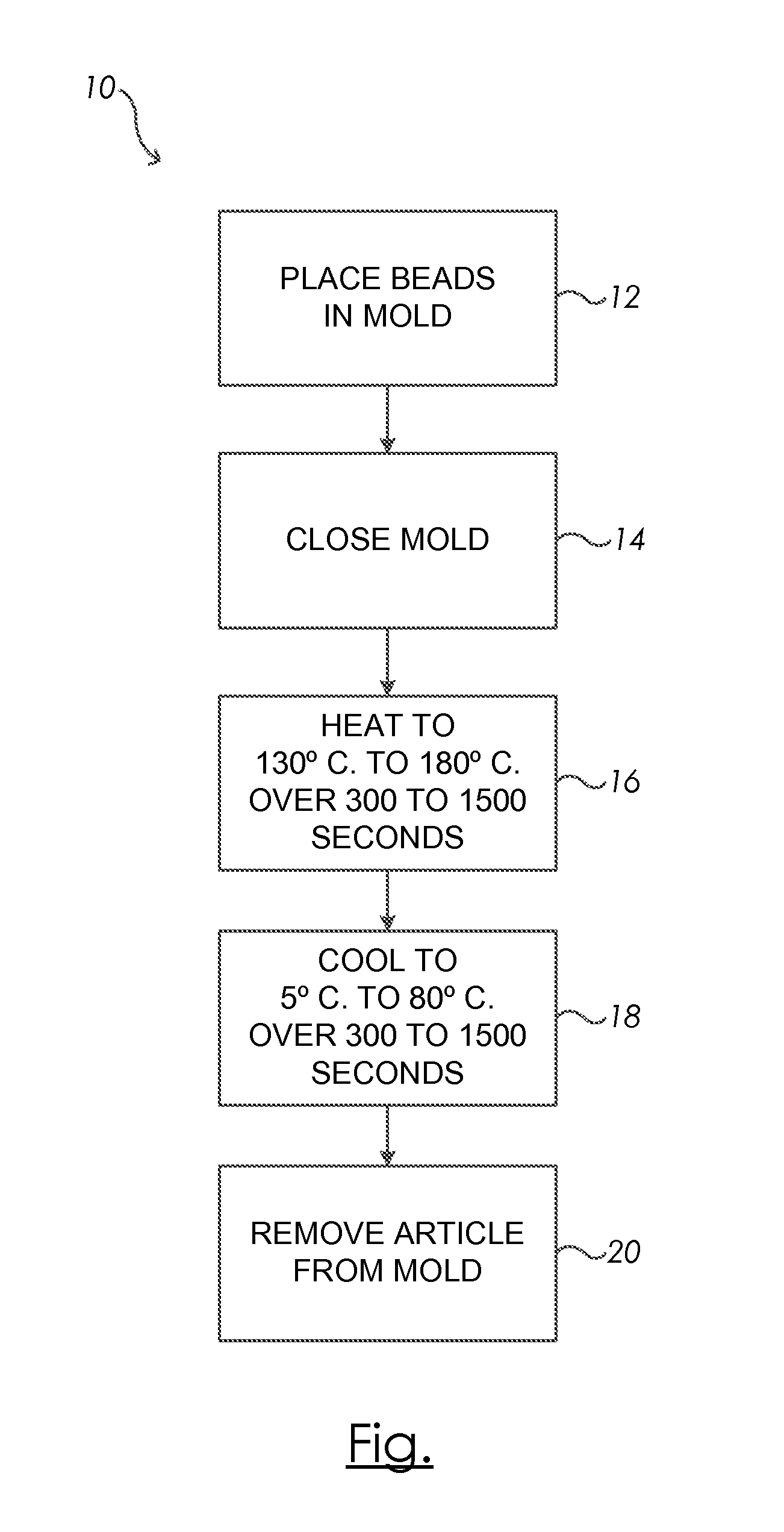Bead Foam Compression Molding Method for Low Density Product
a compression molding and foam technology, applied in the direction of transportation and packaging, other domestic articles, soles, etc., can solve the problem of partially compressing of beads, and achieve the effect of reducing densities and improving character lines
- Summary
- Abstract
- Description
- Claims
- Application Information
AI Technical Summary
Benefits of technology
Problems solved by technology
Method used
Image
Examples
examples 1-3
of the Invention
[0048]In each of Examples 1-3, a compression mold fitted with a mold for a footwear midsole was filed with an amount as shown in Table 1 of thermoplastic polyurethane foam beads obtained from BASF Corporation, Wyandotte, Mich. (10 mm in length ±2 mm, diameter of 0.5 mm±0.2 mm, density of 0.28 to 0.3 g / cm3). The mold was closed, and the mold was then heated from about 18-22° C. to a temperature of 160° C. in 600 seconds between hot plates. The mold was immediately cooled to a temperature of 8° C. over a period of 600 seconds between cold plates. The molded midsole was removed from the mold for measurements. Density and resiliency were measured for each of the three midsole examples 1-3 molded in this way, and the values are recorded in Table 1.
TABLE 1BeadDensityResiliency, %Massg / cm3(ASTM D2632)Example 1 75 g0.21456Example 2116 g0.33161Example 3117 g0.33460
examples 4 and 5
of the Invention
[0049]In each of Examples 4 and 5, a compression mold fitted with a mold for a rectangular slab with a thickness of 20 mm was filed with an amount as shown in Table 2 of thermoplastic polyurethane foam beads like those used in Examples 1-3. The mold was closed, and the mold was then heated between hot plates from about 18-22° C. over a period of time and to a temperature as shown in Table 2. The mold was immediately cooled to a temperature of 8° C. over a period of 600 seconds between cold plates. The molded slabs were removed from the mold for measurements. Density was measured for each of the midsole examples molded in this way, and the values are recorded in Table 2.
TABLE 2BeadDensity,MassHeating Cycleg / cm3Example 470 gheated to 165° C.0.230in 900 sec.Example 560 gheated to 165° C.0.190in 900 sec.
PUM
| Property | Measurement | Unit |
|---|---|---|
| density | aaaaa | aaaaa |
| temperature | aaaaa | aaaaa |
| temperature | aaaaa | aaaaa |
Abstract
Description
Claims
Application Information
 Login to View More
Login to View More - R&D
- Intellectual Property
- Life Sciences
- Materials
- Tech Scout
- Unparalleled Data Quality
- Higher Quality Content
- 60% Fewer Hallucinations
Browse by: Latest US Patents, China's latest patents, Technical Efficacy Thesaurus, Application Domain, Technology Topic, Popular Technical Reports.
© 2025 PatSnap. All rights reserved.Legal|Privacy policy|Modern Slavery Act Transparency Statement|Sitemap|About US| Contact US: help@patsnap.com

